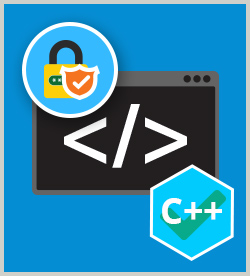IT Skills Software Design and Development Programming Practices Secure Programming
During this course, you'll explore techniques that help you secure your C# code, and a number of best practices. You'll begin by learning how to safely connect strings and apply common data validation techniques for C# applications. Next, you will identify why casting in the C# style is preferred to the C style. From there, learn how to recognize proper C# operator overloading, and how to follow the correct way to access internal class data. Other topics include working with loops, and understanding why for-loops are preferred to while-loops. Other topics include how to study concise, focused, readable C# function examples; how to identify the best way to use references and pointers. Finally, as a review exercise, you will create a C# application that casts correctly, uses proper data validation, and offers concise functions and methods.
| Objectives |
|---|
Defending Code in C#
Best Practices for Defensive Coding
Practice: Secure a C# Application
|


